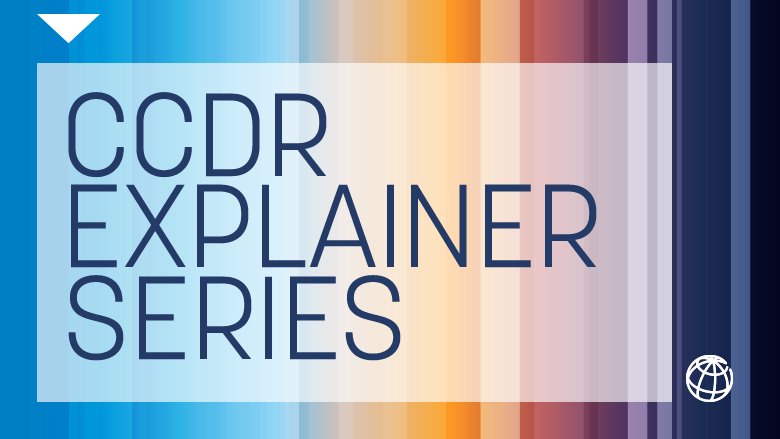Why should CCDRs include adaptation at all? Shouldn't the emphasis be on how countries can reduce emissions?
Climate change adaptation is a development imperative: without policy measures and investments to reduce climate change impacts, countries will not be able to meet their development goals. Our studies show that climate change will have a negative economic effect and increase the number of households living in extreme poverty. Adaptation, however, can lessen these economic and poverty impacts significantly. The number of people falling into poverty by 2030 because of climate change is estimated to range from 32 million and 132 million. This wide range is driven by assumptions regarding the speed of development. The optimistic baseline scenarios assume rapid and inclusive growth, with universal access to basic services in 2030, and a healthier, well-educated population with access to less-climate-vulnerable jobs. Such progress would halve the poverty impacts of climate change compared with the pessimistic baselines in which the pace of development is slower.
So, development can help reduce climate change impacts, but only if development investments made today are themselves resilient. Our CCDRs aim to help countries account for climate impacts in their economic and development decision-making so they can incorporate targeted adaptation measures in their planning, policies, and investments. For example, infrastructure such as roads, buildings, power plants, water supply and treatment plants should be designed and built to be resilient to a range of future climate conditions over their lifetimes. This is why CCDRs not only focus on evaluating options to reduce emissions in countries but also look at climate adaptation in the context of development.
What have CCDRs revealed so far about adaptation needs in countries? Who is most at risk and why?
All the countries we looked at in our first set of 25 CCDRs have been shown to be vulnerable to climate change, but they face different risks and levels of vulnerability depending on their geography and underlying socio-economic conditions. The economywide costs of climate impacts were particularly high for poorer countries least able to bear these costs. Within countries, poor and marginalized communities are most at risk because they have less ability to adapt or to respond to shocks. They are often located in vulnerable areas ¨C for example, the urban poor may live in a flood zone because of limited resources and opportunities.




